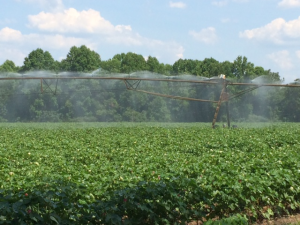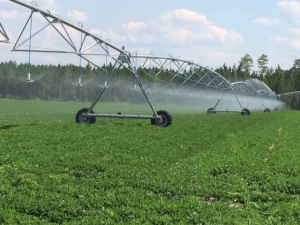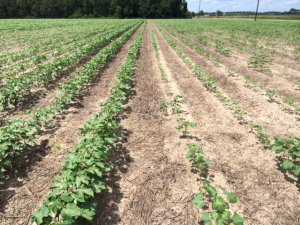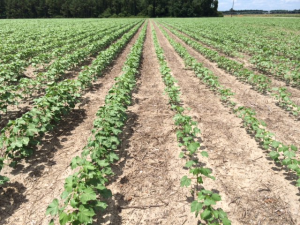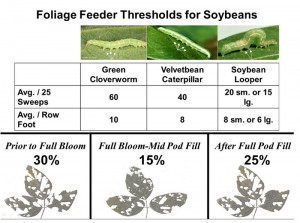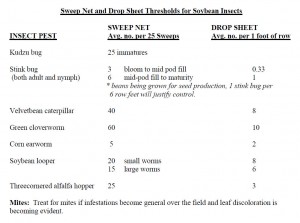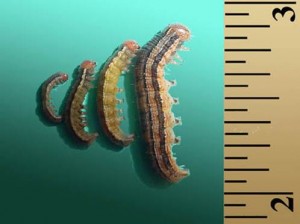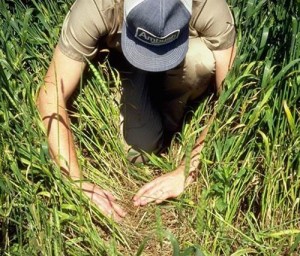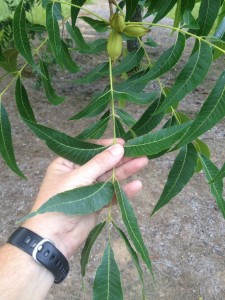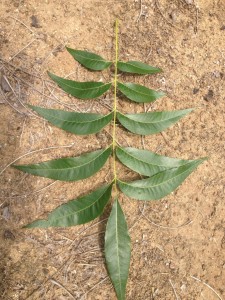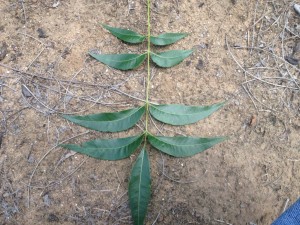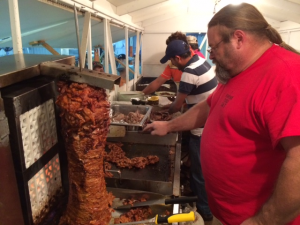Lesser Cornstalk Boer In Peanuts
Lesser cornstalk borer (LCB) is a serious pest of peanut in Georgia, and we are seeing quite a bit of LCB activity. This pest thrives in hot, dry conditions and light sandy soils. Fields need to be scouted to determine if LCB is present. According to Dr. Mark Abney, UGA Peanut Entomologist, several locations should be checked in each field when scouting for LCB. Pull one to three plants at each location; examine these and the remaining plants very carefully. You will be looking for larvae, feeding damage, and silken tubes covered with soil. The larvae can be difficult to find as they will often be inside the silk tubes or inside the stems of the plant.
Granular chlorpyrifos (Lorsban 15G) is currently the only material recommended for LCB control in the UGA Pest Management Handbook. This product CANNOT be applied by airplane to peanut. Liquid formulations of chlorpyrifos are NOT REGISTERED for foliar application in peanut. Granular chlorpyrifos must have rainfall or irrigation to be effective. Chlorpyrifos will kill beneficial insects, and using this product increases the risk of outbreaks of foliage feeding caterpillars and more importantly spider mites.
Dry Weather
It didn’t take long for the all the rain we received earlier this year to almost disappear. Now, we’re seeing cotton wilting and starting to cut out.
Across our area this is what many cotton fields look like
The only solution to the dry weather is obviously irrigation where available and praying for rain!
If you do have irrigation, A cotton crop’s water needs increase to one and a half inch during second week of bloom and two inches for the third and fourth bloom weeks. For the fifth and sixth weeks of bloom, the crop’s water needs drop back to one and a half inches. That total drops further to one inch each week for the rest of the season until bolls begin to open in which irrigation ceases.
In peanuts, the greatest yield reduction can occur from a lack of water during the 50- to 110-day growth period. Peanuts will need about 2 inches of water per week during this peak period. In other words, any rainfall received should be supplemented with irrigation to equal 2 inches of water per week, especially in the latter growth stages. The fruiting period covers from bloom to early pegging and through pod fill. Peanuts in this stage of growth are highly susceptible to drought. Once you get to within one month of harvest, the water requirements begin to decrease.
Is cotton finished once it blooms out of the top? Not always. In 2010 we saw a similar situation. Once the bottom fruit load matures the plant will put on additional fruit. But, only time will tell exactly what will happen.
Nematode Trial Update in Cotton
The below pictures were taken 40 days after planting. Cotton treated with Telone is on the left and untreated is on the right. I think the pictures speak for themselves!
Soybeans
Dimilin (2 to 4 oz) and boron should be applied at bloom to early pod set.Boron should be applied at .25-pound per acre. Higher rates can sometimes burn foliage and reduce yields. Below are the rates of common boron products needed to give a grower .25 pound of actual boron:
• Solubor — 1.2 pounds per acre.
• Ten-percent boron (liquid) — 1 quart per acre.
• Five-percent boron (liquid) — 2 quarts per acre.
Keep a check on insects and treat when necessary.
Know the difference between what worms are in your soybeans. Soybean loopers have 2 pair of abdominal prolegs, Green cloverworms have 3 and velvetbean caterpillars have 4.
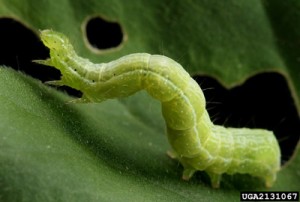
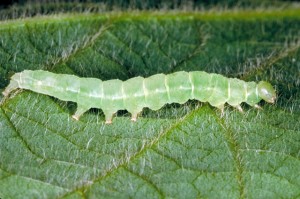
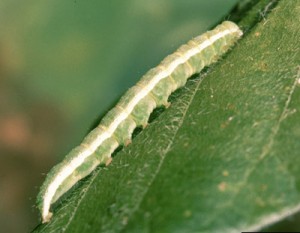
Armyworms in Hay
Armyworm populations are increasing in hayfields. Seeing a flock of cowbirds feeding on a field can be an indicator of an armyworm infestation, but by this time the worms may already be large in size and difficult to kill. Scout fields at least weekly for worms. The worms are most active during the cooler parts of the day, so it is best to scout early in the morning or early evening. Check various spots in the field by moving the grass with both arms, then look on the leaves for feeding damage, and on the ground for rolled up worms. Repeat this process in multiple locations in each field. If you find 3 or more worms per square foot treatment is recommended.
Sevin, Prevathon, Baythroid, Karate, Intrepid, Tracer, Lannate, Dimilin, Mustang Max, Voliam Express are all products labeled for Armyworms in Georgia.
Time For Pecan Leaf Sampling
Dr. Lenny Wells reminds us that leaf sampling is the most important tool pecan growers have for determining their fertility needs. While soil samples are helpful for checking soil pH and determining any potential problems with competitive uptake between nutrients in the soil, leaf samples tell you the fertility status of the actual trees. Using soil and leaf samples together allows growers to match their fertilizer applications with the actual needs of the tree rather than just shooting in the dark. This provides an excellent opportunity to save a lot of money on fertilizer cost.
The general recommended period for leaf sampling is July 7-August 7.
-Collect 50- 100 middle-pair of leaflets from the middle leaf of this year’s growth (See figure above). Use terminal shoots exposed to the sun. Avoid twigs from the interior of the tree. Collect leaflets from all sides of the tree. Avoid leaflets damaged by insects and diseases.
-Abnormal trees or trees not representative of the area should be sampled separately. A complete and accurate description of abnormalities should accompany such samples.
-Sample trees of the predominant variety in a given block. If Schley is the main variety, sample Schley; if Stuart is the main variety, then sample Stuart, etc.
-Immediately upon collection, wipe leaves (entire surface, both top and bottom) with a damp cellulose sponge or cheese cloth to remove dust and spray residue. Do not allow the leaves to come into contact with rubber or galvanized containers. Partially air dry and place in the large envelope of the mailing kit.
-If recent soil test data is not available, it would be advisable to collect a soil sample and have it sent to a soil testing laboratory. By sampling the same trees each year, growers can more readily see the results of any changes to their nutritional programs.
Below are pictures showing which leaves to remove. Sample the 3rd pair of leaves.
In other news, Chef Allen Miles cooks for his employees for an end of blueberry season celebration!
I’ll be in Mobile Alabama June 20-24 for the National Association of County Agricultural Agents Annual meeting. Call if you need anything.




